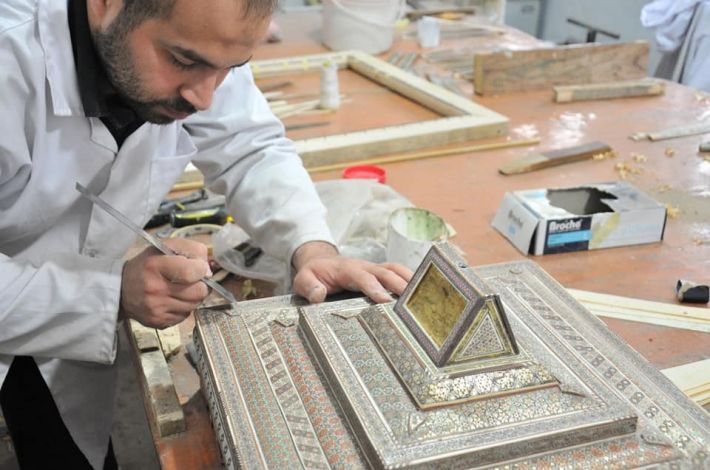The director of Al-Kafeel Museum Mr. Sadeq Lazem explained to the Al-Kafeel: "The first session was to examine the capabilities of the staff to understand the training and its preparations as well as to provide the session materials, while this session is about practical training in a month, with the participation of the staff of Al-Kafeel and Imam Al-Hussayn's (p) museums and some employees of the units of manuscripts' restoration and of carpentry of engineering department at the Al-Abbas's (p) holy shrine, in two groups."
Adding: "The experts in the arabesque and ring industry in Iran are in charge of this session, and we are very pleased of the impressive results of these courses, especially regarding the renovation of the existing pieces in our museum."
The supervisor of this session, Mr. Safar Sami has stated: "This session is a continuation of the first session as it is a basis for the future sessions, dealing with the finishing of the arabesque , like for the existing boxes in the shrine of Aba Al-Fadl Al-Abbas (peace be upon him) and other holy shrines were all made of this material, as it this art is one of the most accurate art in the world, but unfortunately this art began to subside relying on techniques and methods that are meaningful and without relevant results compared to our work."
Adding: "The first session was to define this art methods and mechanisms, while this session is practical application on different kinds of wood after cutting and polishing it to take the form of slides, and then assemble it in form of a ring. It is worth mentioning that the staff were trained in a month for some techniques that need more than three months to be learned, thanks to their efficiency and talent. The aim of the establishment of these course is to serve Imam Al-Hussayn and his brother Aba Al-Fadl Al-Abbas (peace be upon both of them) through training their servants to perform this art in the best of ways."
It is noteworthy that the art (arabesque) is one of the authentic art of more than a thousand years and that characterized the Arab-Islamic civilization. It is originally of architectural character that interferes often in furniture. This art (arabesque) has emerged during the last decades of the nineteenth century and early twentieth century.
















